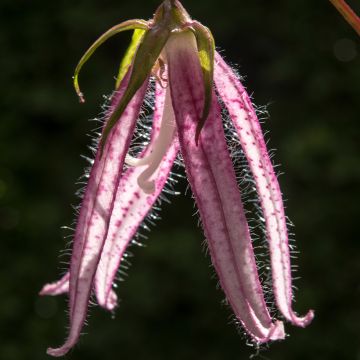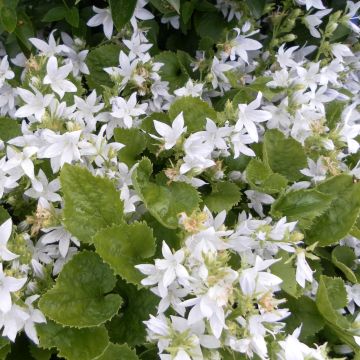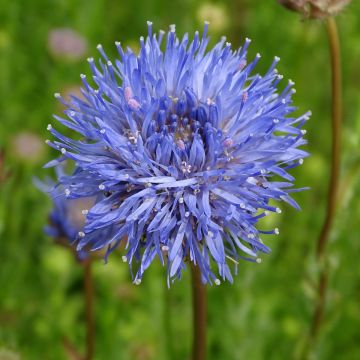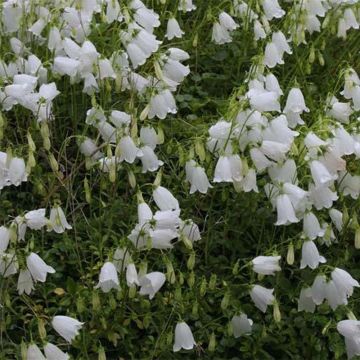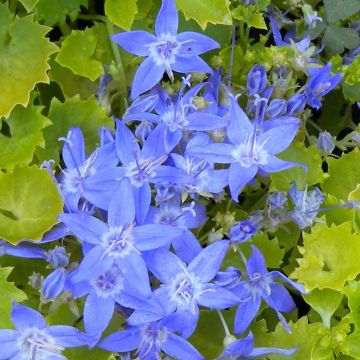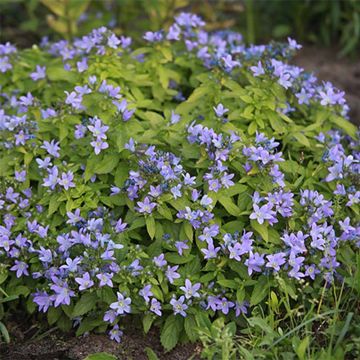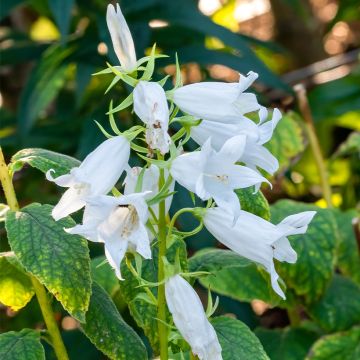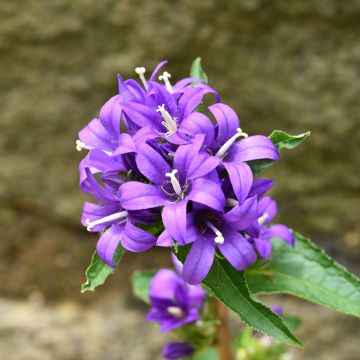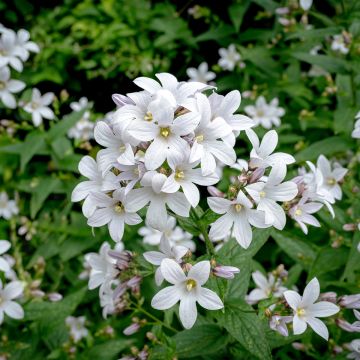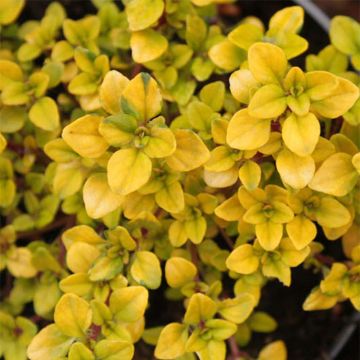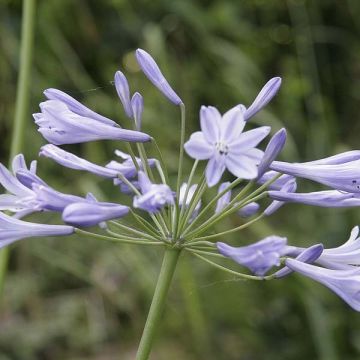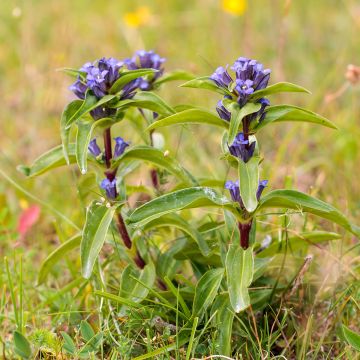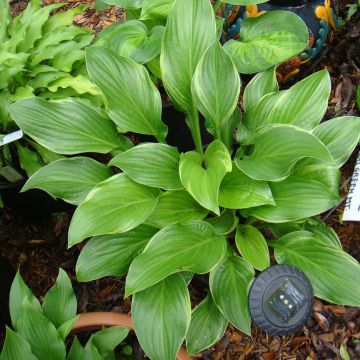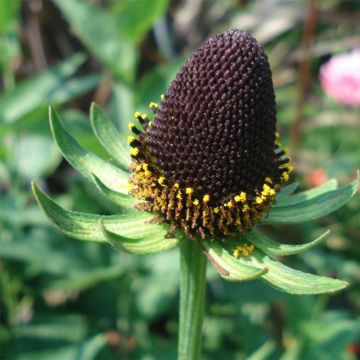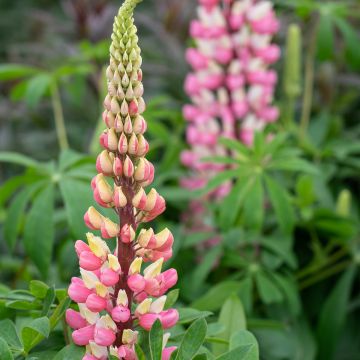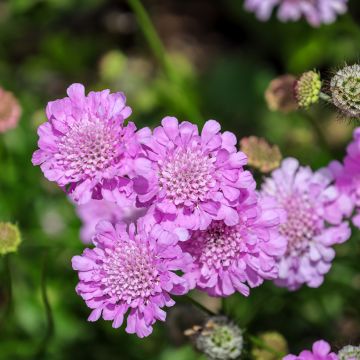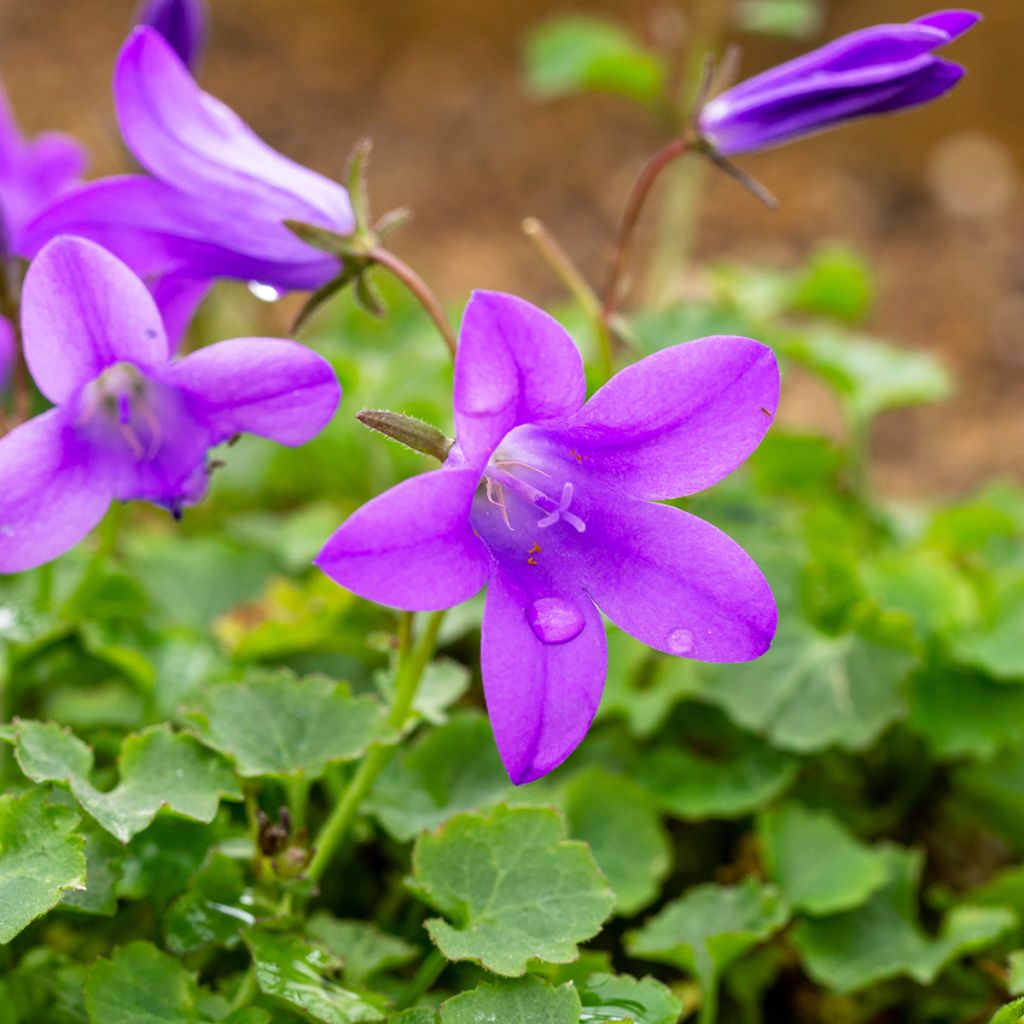

Campanula portenschlagiana Resholdts Variety
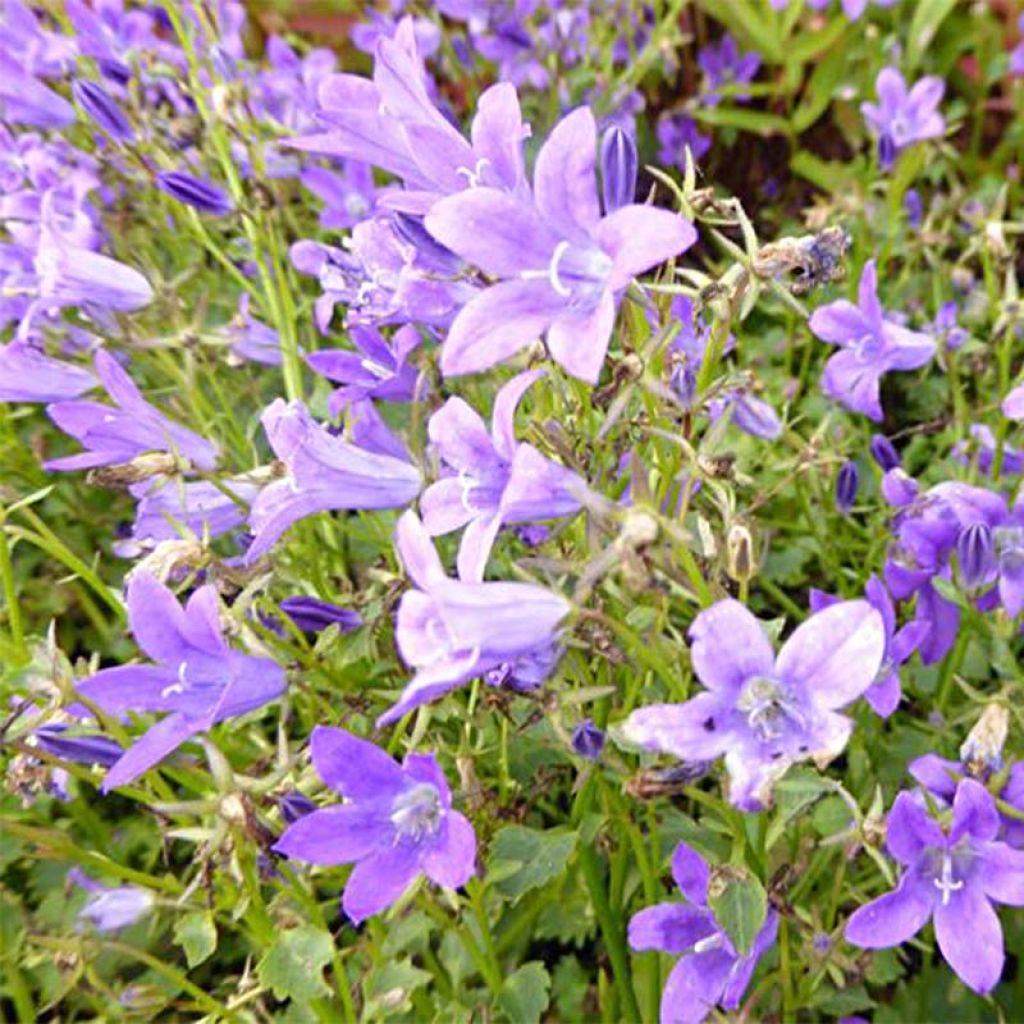

Campanula portenschlagiana Resholdts Variety
Campanula portenschlagiana Resholdts Variety
Campanula poscharskyana Resholt Variety
Trailing Bellflower, Serbian Bellflower
This item cannot be shipped to the selected country
Delivery charge from €5.90
More information
Schedule delivery date,
and select date in basket
This plant carries a 12 months recovery warranty
More information
We guarantee the quality of our plants for a full growing cycle, and will replace at our expense any plant that fails to recover under normal climatic and planting conditions.
From €5.90 for pickup delivery and €6.90 for home delivery
Express home delivery from €8.90.
Does this plant fit my garden?
Set up your Plantfit profile →
Description
Campanula portenschlagiana 'Resholdt's Variety' is a variety of Wall Bellflower whose bright blue-purple star-shaped flowers are distinguished by their wider petals. It is a creeping perennial plant that forms beautiful, long-flowering mats, in spring and early summer, and sometimes again in September. Renowned for its robustness and adaptability, it is a classic in gardens. This wonderful, floriferous ground cover deserves a prominent place in rockeries, above a wall, or in a planter where it will cascade joyfully.
Campanula portenschlagiana belongs to the campanula family. It is a small, very hardy perennial plant native to the Balkan mountains. In nature, it is found in rock crevices and high mountain scree slopes. 'Resholdt's Variety' differs only in the appearance of its flowers, which have wider petals. The plant forms a cushion 20 cm (8in) tall, with a minimum spread of 60 cm (24in). It spreads through stems that root upon contact with the ground, allowing it to occupy an increasingly larger area. Flowering begins in late spring and continues throughout the summer, more prominently in cool climates. It is common for flowering to pause in summer when it is dry and hot with a resurgence in autumn. The star-shaped flowers measure 2 to 2.5 cm (1in) in diameter and are carried in loose panicles along hairy stems. The foliage is semi-evergreen to evergreen depending on the climate and consists of small, hairy, long-stalked, heart-shaped leaves with toothed edges.
'Resholdt's Variety' Wall Bellflower is a mountain plant that does not like overly hot and dry climates or hot nights. It thrives in light, not too dry soil but dislikes stagnant moisture that can cause root rot. It is easy to provide such conditions in a sunny or semi-shaded rockery. It will quickly fill cracks in paving and cover old and low walls. Planted in a row, it will create charming, neat little borders. It is suitable for wild gardens and planting in pots, in light and well-drained substrate. In hanging baskets, it will cascade in small bright curtains: combine it with pink Diascia, annual white-flowered euphorbia Diamond Frost or lemon yellow Coreopsis for example.
Report an error about the product description
Campanula portenschlagiana Resholdts Variety in pictures
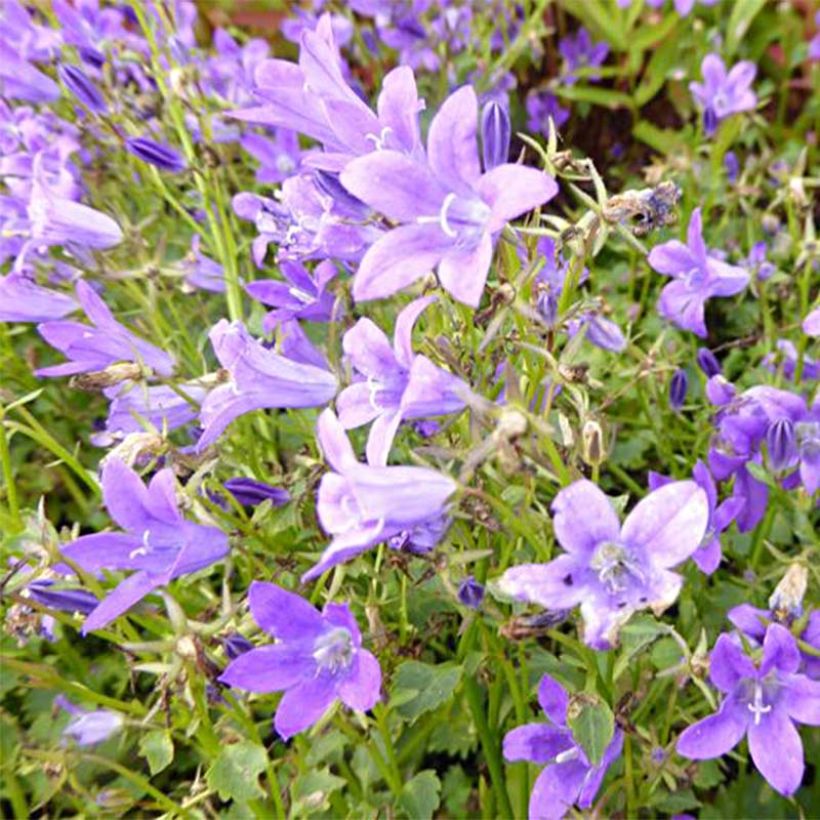

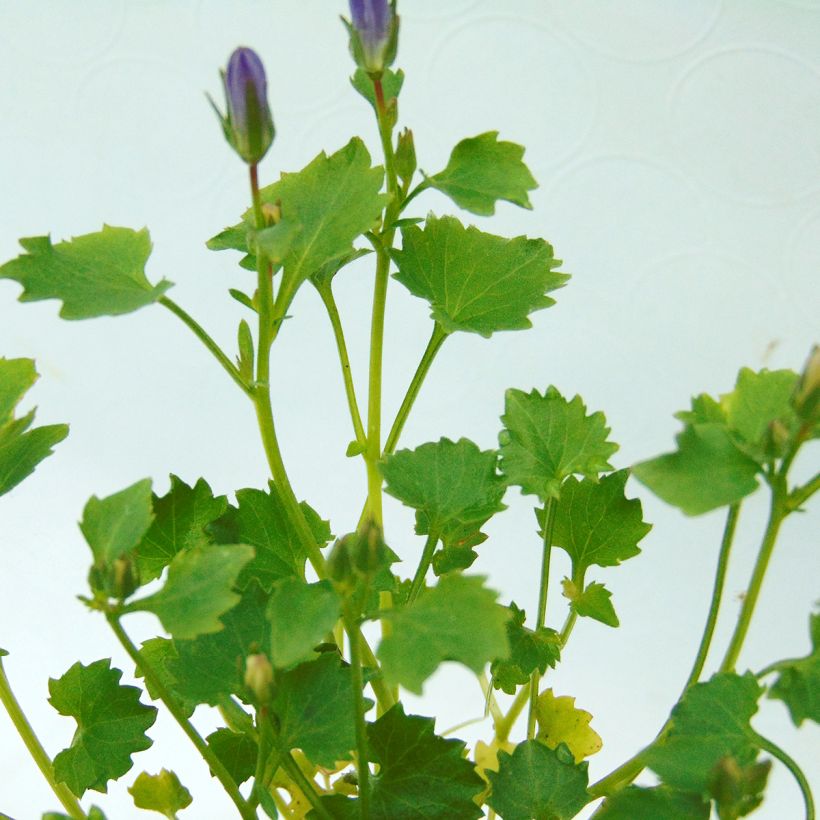

Flowering
Foliage
Plant habit
Botanical data
Campanula
poscharskyana
Resholt Variety
Campanulaceae
Trailing Bellflower, Serbian Bellflower
Cultivar or hybrid
Other Campanula - Bell Flower
Planting and care
Campanula portenschlagiana likes light, moist soil, but dislikes stagnant moisture that can cause the roots to rot. It requires well-drained soil, still slightly moist, to thrive. You can plant it in non-scorching sun or part shade, sheltered from strong winds that dry it out. This mountain plant does not like climates that are too hot or nights where the temperature remains high. It develops well during hot summer days tempered by short nights. Its development can be easily controlled by cutting back the creeping stems. Clean the foliage at the end of flowering and in spring. Regularly provide organic fertilizer to support flowering in pots.
Planting period
Intended location
Care
-
, onOrder confirmed
Reply from on Promesse de fleurs
Summer flowering perennials
Haven't found what you were looking for?
Hardiness is the lowest winter temperature a plant can endure without suffering serious damage or even dying. However, hardiness is affected by location (a sheltered area, such as a patio), protection (winter cover) and soil type (hardiness is improved by well-drained soil).

Photo Sharing Terms & Conditions
In order to encourage gardeners to interact and share their experiences, Promesse de fleurs offers various media enabling content to be uploaded onto its Site - in particular via the ‘Photo sharing’ module.
The User agrees to refrain from:
- Posting any content that is illegal, prejudicial, insulting, racist, inciteful to hatred, revisionist, contrary to public decency, that infringes on privacy or on the privacy rights of third parties, in particular the publicity rights of persons and goods, intellectual property rights, or the right to privacy.
- Submitting content on behalf of a third party;
- Impersonate the identity of a third party and/or publish any personal information about a third party;
In general, the User undertakes to refrain from any unethical behaviour.
All Content (in particular text, comments, files, images, photos, videos, creative works, etc.), which may be subject to property or intellectual property rights, image or other private rights, shall remain the property of the User, subject to the limited rights granted by the terms of the licence granted by Promesse de fleurs as stated below. Users are at liberty to publish or not to publish such Content on the Site, notably via the ‘Photo Sharing’ facility, and accept that this Content shall be made public and freely accessible, notably on the Internet.
Users further acknowledge, undertake to have ,and guarantee that they hold all necessary rights and permissions to publish such material on the Site, in particular with regard to the legislation in force pertaining to any privacy, property, intellectual property, image, or contractual rights, or rights of any other nature. By publishing such Content on the Site, Users acknowledge accepting full liability as publishers of the Content within the meaning of the law, and grant Promesse de fleurs, free of charge, an inclusive, worldwide licence for the said Content for the entire duration of its publication, including all reproduction, representation, up/downloading, displaying, performing, transmission, and storage rights.
Users also grant permission for their name to be linked to the Content and accept that this link may not always be made available.
By engaging in posting material, Users consent to their Content becoming automatically accessible on the Internet, in particular on other sites and/or blogs and/or web pages of the Promesse de fleurs site, including in particular social pages and the Promesse de fleurs catalogue.
Users may secure the removal of entrusted content free of charge by issuing a simple request via our contact form.
The flowering period indicated on our website applies to countries and regions located in USDA zone 8 (France, the United Kingdom, Ireland, the Netherlands, etc.)
It will vary according to where you live:
- In zones 9 to 10 (Italy, Spain, Greece, etc.), flowering will occur about 2 to 4 weeks earlier.
- In zones 6 to 7 (Germany, Poland, Slovenia, and lower mountainous regions), flowering will be delayed by 2 to 3 weeks.
- In zone 5 (Central Europe, Scandinavia), blooming will be delayed by 3 to 5 weeks.
In temperate climates, pruning of spring-flowering shrubs (forsythia, spireas, etc.) should be done just after flowering.
Pruning of summer-flowering shrubs (Indian Lilac, Perovskia, etc.) can be done in winter or spring.
In cold regions as well as with frost-sensitive plants, avoid pruning too early when severe frosts may still occur.
The planting period indicated on our website applies to countries and regions located in USDA zone 8 (France, United Kingdom, Ireland, Netherlands).
It will vary according to where you live:
- In Mediterranean zones (Marseille, Madrid, Milan, etc.), autumn and winter are the best planting periods.
- In continental zones (Strasbourg, Munich, Vienna, etc.), delay planting by 2 to 3 weeks in spring and bring it forward by 2 to 4 weeks in autumn.
- In mountainous regions (the Alps, Pyrenees, Carpathians, etc.), it is best to plant in late spring (May-June) or late summer (August-September).
The harvesting period indicated on our website applies to countries and regions in USDA zone 8 (France, England, Ireland, the Netherlands).
In colder areas (Scandinavia, Poland, Austria...) fruit and vegetable harvests are likely to be delayed by 3-4 weeks.
In warmer areas (Italy, Spain, Greece, etc.), harvesting will probably take place earlier, depending on weather conditions.
The sowing periods indicated on our website apply to countries and regions within USDA Zone 8 (France, UK, Ireland, Netherlands).
In colder areas (Scandinavia, Poland, Austria...), delay any outdoor sowing by 3-4 weeks, or sow under glass.
In warmer climes (Italy, Spain, Greece, etc.), bring outdoor sowing forward by a few weeks.

































